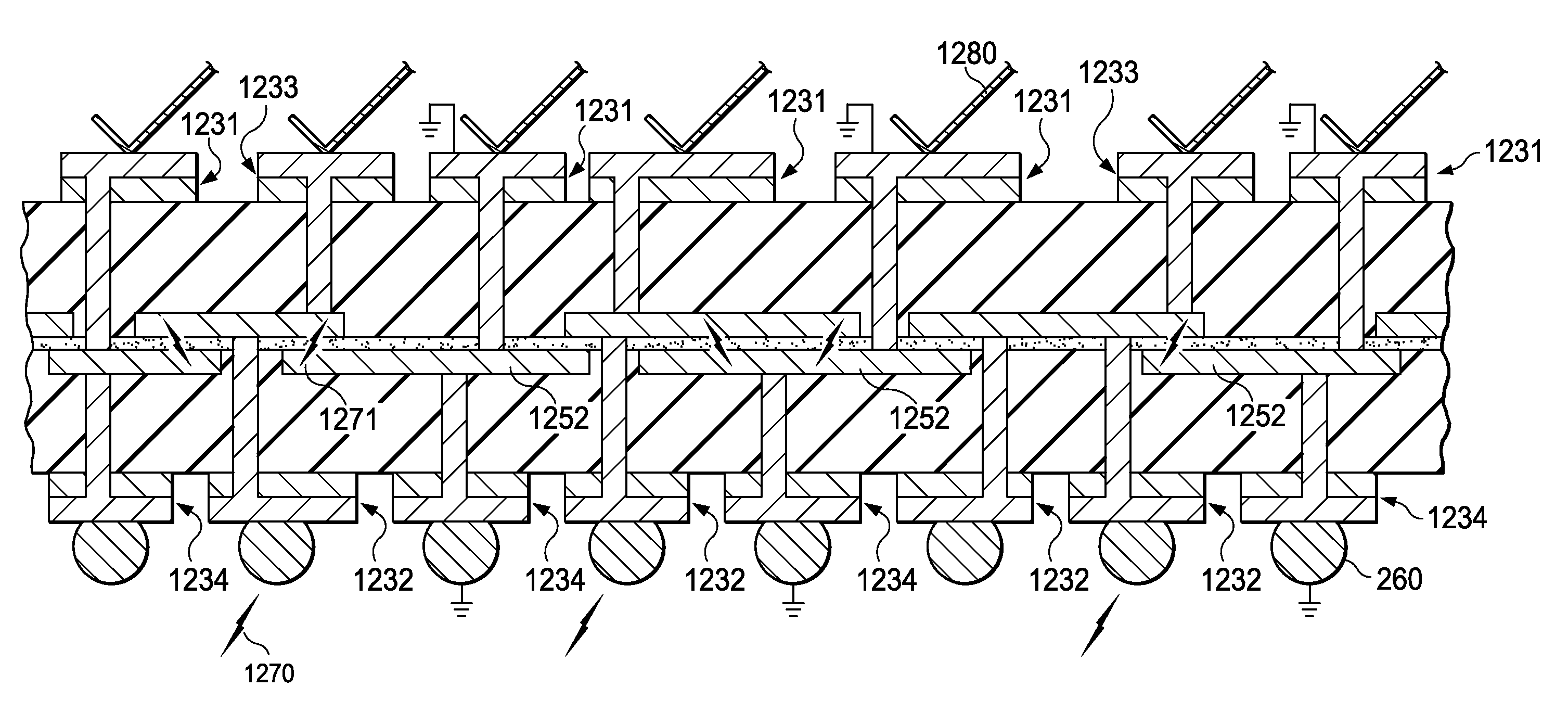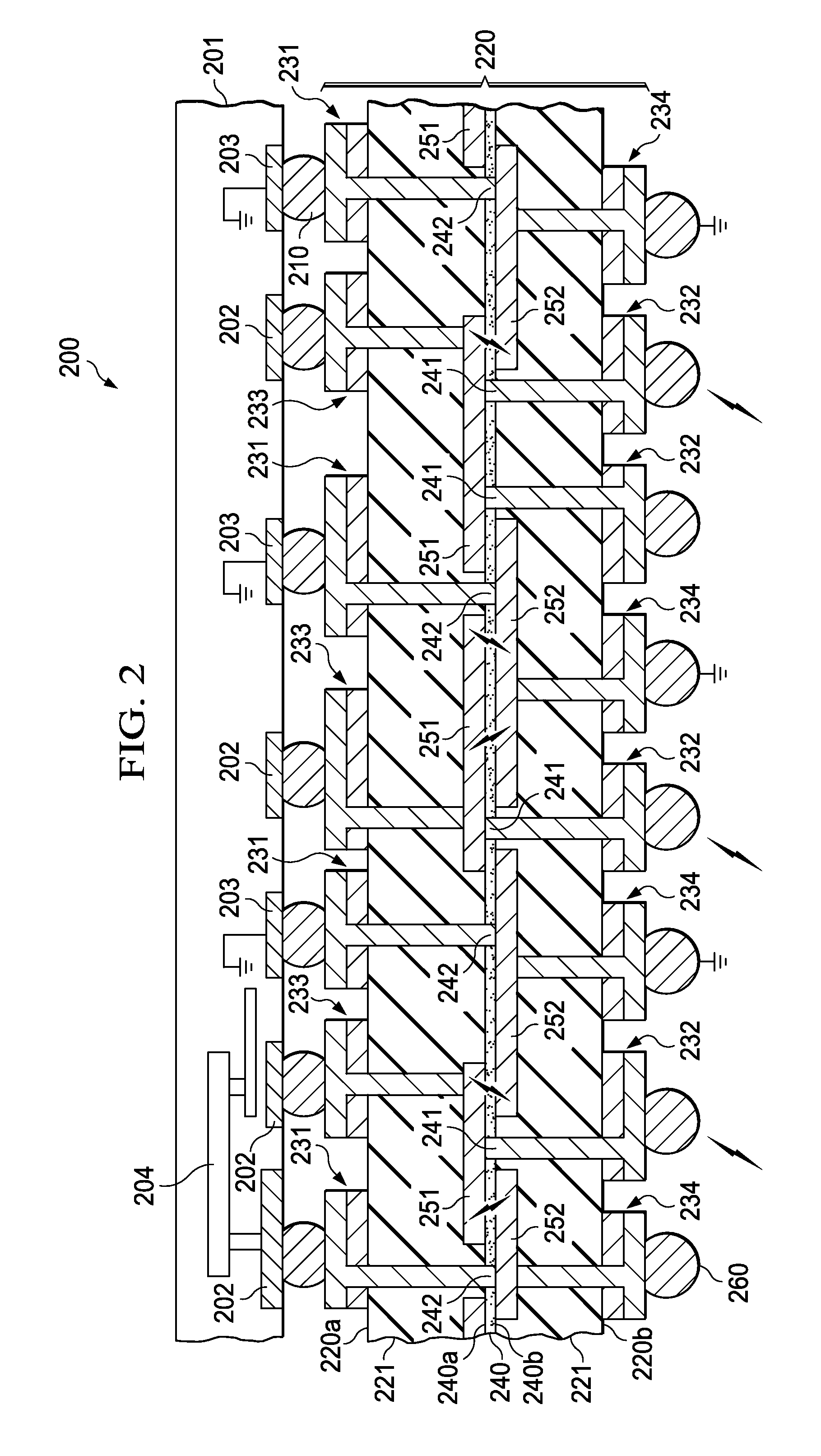In package ESD protections of IC using a thin film polymer
a technology of ic and thin film, applied in the field of electronic systems and semiconductor devices, can solve the problems of high stress current discharge in system-level esd (iec) events, inability to adapt to the structure, and inability to meet the requirements of device miniaturization,
- Summary
- Abstract
- Description
- Claims
- Application Information
AI Technical Summary
Benefits of technology
Problems solved by technology
Method used
Image
Examples
Embodiment Construction
[0036]FIG. 2 illustrates a schematic cross section of an embodiment of the invention, which is an electronic device generally designated 200 with protection against transients. Device 100 includes an electronic component 201 connected by solder bodies 210 to a substrate 220. Component 201 may be a semiconductor chip, or may be another device in need for protection against electrostatic discharge, system level transients, cable discharge events, transient latch-ups, or any other electrostatic overcharge events. As FIG. 2 shows, chip 201 has metallic electrodes for external connections. According to their electrical function, the electrodes are grouped in sets: First electrodes 202 serve electrical signal and power, and second electrodes 203 serve electrical ground potential (or supply / ground; zero power being equivalent to ground). One of the first electrodes is schematically shown with its own protection device 204.
[0037]FIG. 2 also shows a substrate 220, onto which the component 20...
PUM
| Property | Measurement | Unit |
|---|---|---|
| thickness | aaaaa | aaaaa |
| thickness | aaaaa | aaaaa |
| electrical resistance | aaaaa | aaaaa |
Abstract
Description
Claims
Application Information
 Login to View More
Login to View More - R&D
- Intellectual Property
- Life Sciences
- Materials
- Tech Scout
- Unparalleled Data Quality
- Higher Quality Content
- 60% Fewer Hallucinations
Browse by: Latest US Patents, China's latest patents, Technical Efficacy Thesaurus, Application Domain, Technology Topic, Popular Technical Reports.
© 2025 PatSnap. All rights reserved.Legal|Privacy policy|Modern Slavery Act Transparency Statement|Sitemap|About US| Contact US: help@patsnap.com



